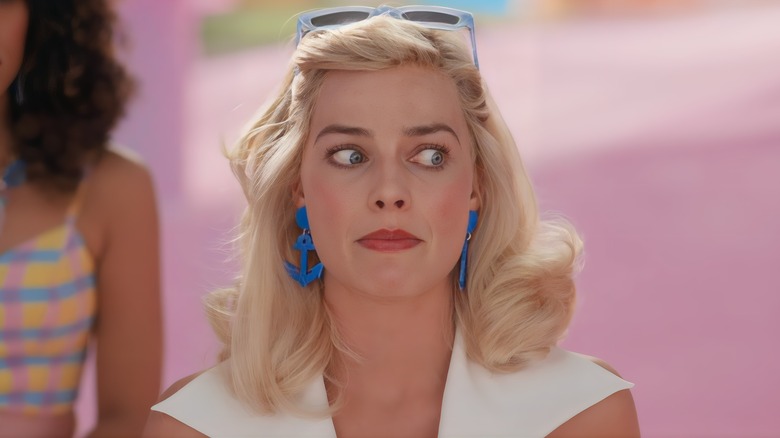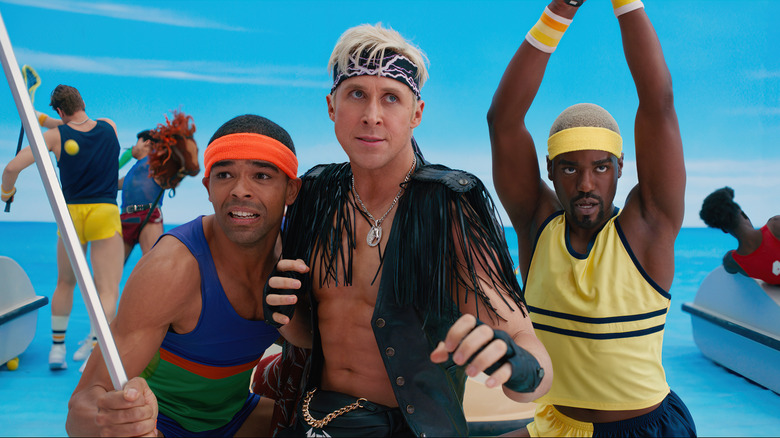Margot Robbie's Barbie Almost Looked Very Different
Greta Gerwig's "Barbie" has been hailed for its highly stylized design elements, and as it turns out, early ideas for the look of the movie would have pushed that even further. According to "Barbie" makeup artist Ivana Primorac, who spoke to E! News, Margot Robbie and her friends in Barbieland could have been rendered as actual life-sized plastic dolls for the film. However, that idea was quickly vetoed.
Said Primorac, "We thought, 'Should they have plastic seams? Should they have plastic skin, plastic hair?'" But while the idea of seeing Robbie as an actual doll sounds like it could have been an interesting visual choice, the creatives on "Barbie" ultimately decided against it because it didn't play into the fantasy children have when they play with Barbies. "We didn't like all of those things in the end because Barbies are beautiful in every child's mind," Primorac explained. "So, once we created that fake image, it wasn't beautiful."
Even without literally making the characters in Barbieland plastic, Primorac was clear in pointing out that their reality is still heightened and their bodies still exaggerated as a result. "There's a high finish to everything," she said, "so the hair is bigger and the skin is more luminous." But the film's creators wanted to show beauty in all its forms, a precondition for Margot Robbie before coming aboard.
Barbie could have had a life in plastic but body positivity was important
"Barbie" plays with far more ideas than you might expect from a film based on a children's toy, among them, the effects of patriarchy on both men and women and, according to some fans, even Greek philosophy. But with so much of the intellectual discourse surrounding Barbie dolls having centered on how the toy might affect girls' body image, discussions of self-worth and beauty standards also crop up throughout the film. According to makeup artist Ivana Primorac, presenting that discussion in the right framework was a major reason Barbie and Ken weren't shown as being made of actual plastic.
"What's most beautiful is each person being the best they can be," Primorac said. "To make them believable, relatable, and into dolls, every single Ken and Barbie had to be the best version of themselves. Everyone had to have the best skin that suits them, everyone had to have the hair color that suits them."
Of course, just because the doll characters in "Barbie" weren't shown as plastic doesn't mean they were entirely correct anatomically. Several lines in the film joke about Barbie and Ken's lack of genitals. Meanwhile, the film's inciting incident involves Stereotypical Barbie discovering what it means to be human, a major part of which is having an imperfect body. And so, it is in part the discovery of some cellulite that leads Barbie to journey into the real world for answers.
"Beauty is at the center of what Barbie is," Primorac explained. "She has to be beautiful, but that's why I think the story is so clever. Ultimately, the film is about so many other things — individuality, our beauty as people, how it can be celebrated in every way."

